Hitting a home run in baseball is a coveted achievement that showcases a player’s skill and power at the plate. Factors like altitude, wind, and stadium size can significantly impact the likelihood of a successful home run.
In the world of Major League Baseball (MLB), the size of the stadium plays a crucial role in determining the frequency of home runs.
Among the numerous MLB stadiums, some stand out for being more favorable to home runs due to their smaller dimensions.
These stadiums create an environment where hitting a home run becomes a bit easier, making them popular among players and fans alike.
Exploring the top 10 smallest MLB stadiums for hitting a home run sheds light on the unique characteristics that make these venues ideal for witnessing those spectacular long balls on the field.
Count Down: 10 Smallest MLB Stadiums to Hit a Home Run
Here’s a list of the 10 smallest MLB stadiums where hitting a home run can be a bit easier due to the park dimensions:
10. Tropicana Field – Tampa Bay Rays
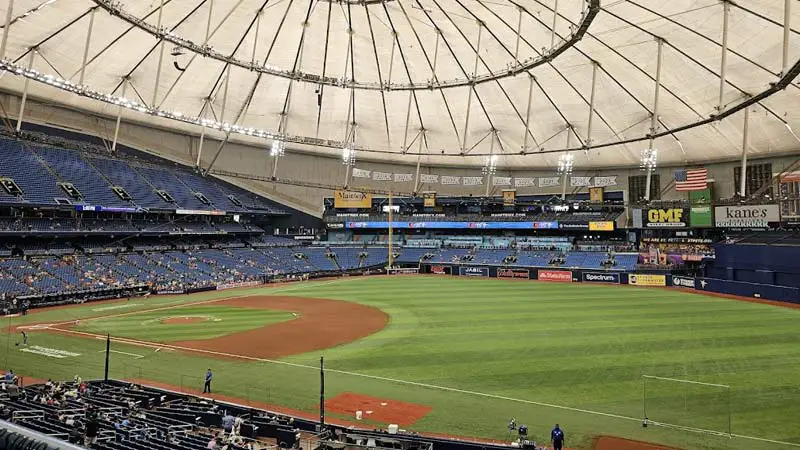
Tropicana Field, home to the Tampa Bay Rays, stands out as one of the smallest MLB stadiums, creating favorable conditions for hitting home runs.
With short distances in the right and left fields, batters have increased chances of sending the ball over the walls.
The outfield walls are closer to home plate compared to many other ballparks, contributing to the park’s reputation as an easy place to hit home runs.
9. Yankee Stadium – New York Yankees
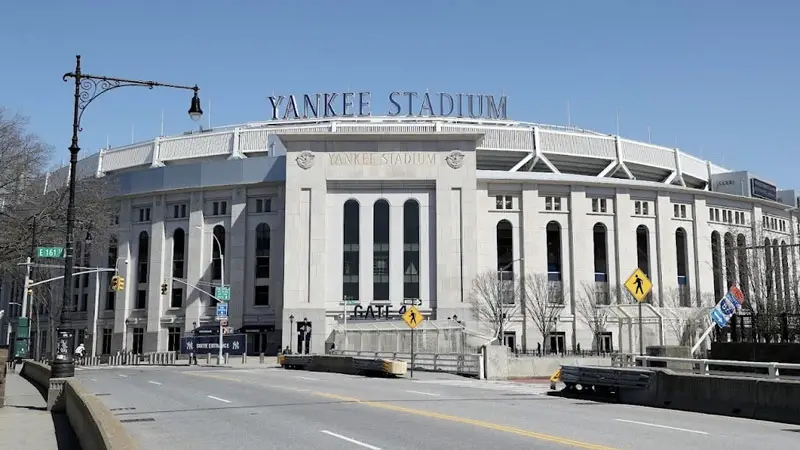
Yankee Stadium, hosting the New York Yankees, is known for its hitter-friendly dimensions, making it one of the smallest stadiums perfect for home runs.
The right-side fence at Yankee Stadium is much closer to home plate than in other venues, increasing the likelihood of batters hitting homers.
The outfield dimensions, especially along the right-field line, create ideal conditions for driving the ball deep.
8. Great American Ball Park – Cincinnati Reds
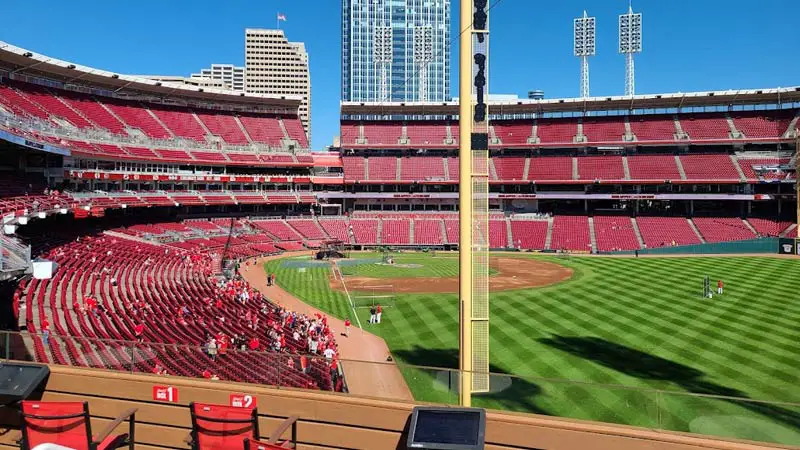
The Great American Ball Park, home to the Cincinnati Reds, boasts some of the best conditions for hitting home runs.
Its right-side fence is closer to home plate than in many other venues, offering a prime opportunity for batters to showcase their power.
The warm and humid weather during the baseball season at this ballpark reduces air density, allowing the ball to travel faster and aiding in driving more home runs.
7. Guaranteed Rate Field – Chicago White Sox
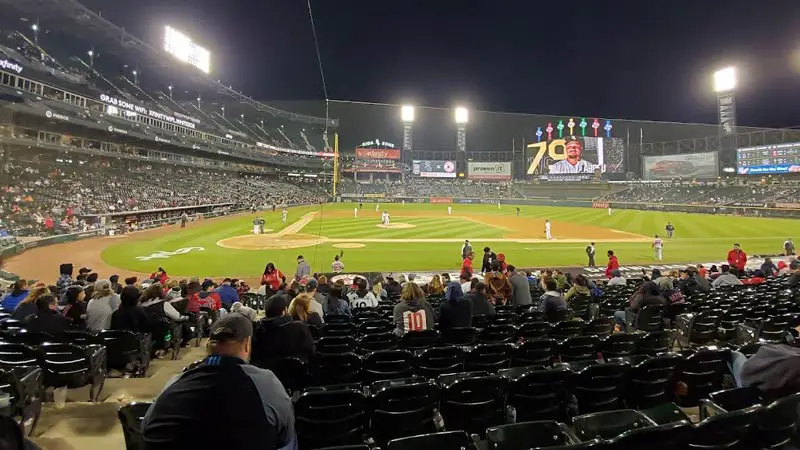
Guaranteed Rate Field, home of the Chicago White Sox, features dimensions that favor hitters, particularly down the lines.
The shorter distances to the outfield walls in left and right fields make it easier for batters to hit home runs, especially power hitters aiming to capitalize on the park’s dimensions.
Other small MLB stadiums conducive to hitting home runs include Fenway Park, with its close left-field fence and the notorious Green Monster, and Tropicana Field, known for its short distance to the right-field wall, making it an attractive prospect for power hitters.
6. Citizens Bank Park – Philadelphia Phillies
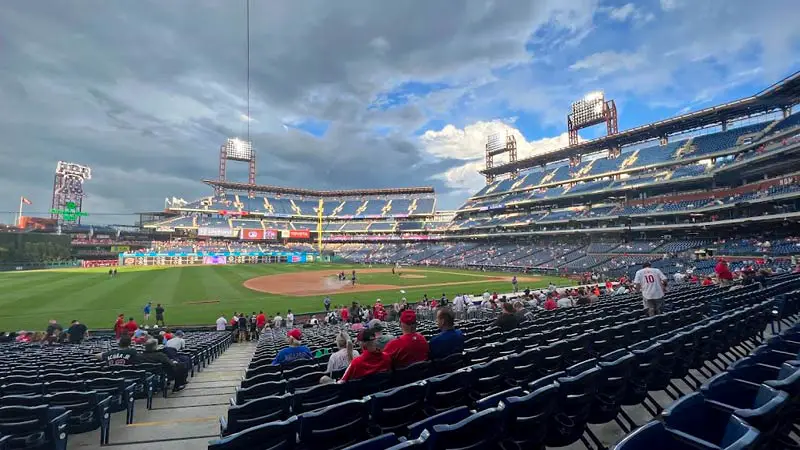
Citizens Bank Park, where the Philadelphia Phillies play, is renowned for its hitter-friendly dimensions, particularly in right field.
The short porch in right field (330 feet) allows left-handed hitters, in particular, to aim for home runs with greater ease. The stadium’s dimensions contribute to high-scoring games and thrilling moments for fans.
If you prefer a more intimate setting to watch a game, you might enjoy Tropicana Field, the home of the Tampa Bay Rays, known for its cozy atmosphere and unique indoor setup.
With its compact dimensions, hitters have the opportunity to showcase their power in this small MLB stadium.
5. Minute Maid Park – Houston Astros
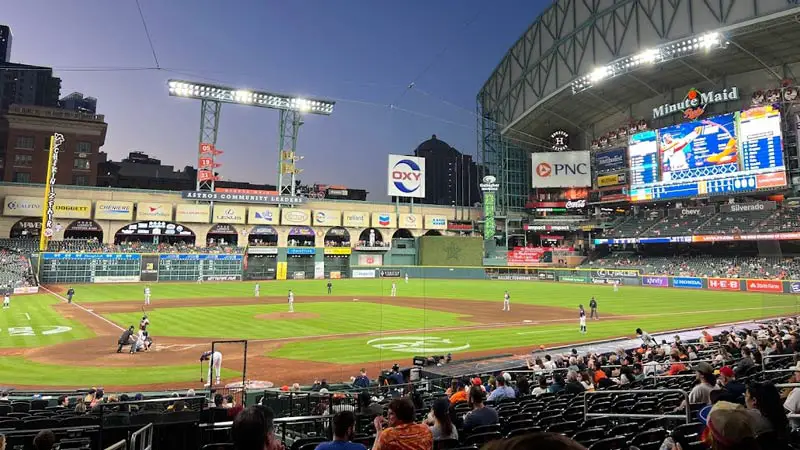
Minute Maid Park, the home of the Houston Astros, features unique dimensions, including a short left-field porch known as the Crawford Boxes.
The dimensions in left field (315 feet) and other parts of the ballpark make it conducive for both right-handed and left-handed hitters to hit home runs. The park’s layout often leads to exciting offensive displays during games.
Other MLB stadiums that offer favorable conditions for hitting home runs due to their smaller sizes include Tropicana Field, home of the Tampa Bay Rays, and Oracle Park, home of the San Francisco Giants.
These stadiums also present opportunities for both left and right-handed hitters to showcase their power at the plate. The compact designs of these parks contribute to the thrill of watching high-scoring games.
4. Coors Field – Colorado Rockies
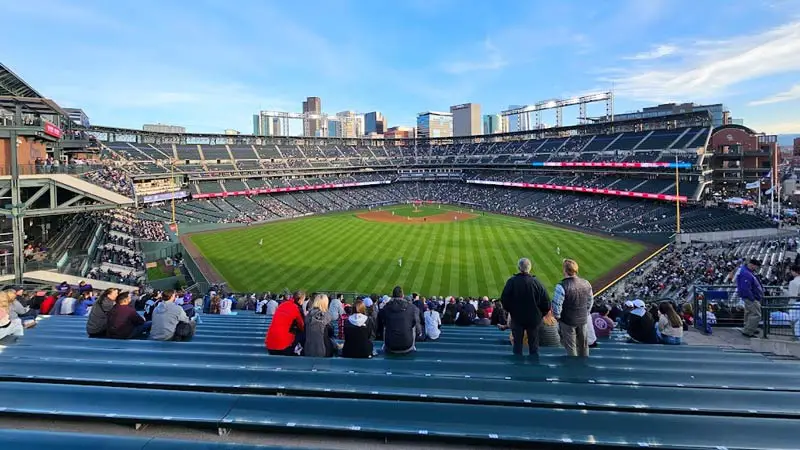
Coors Field, located in Denver, Colorado, is famously known for its high altitude, which significantly impacts the frequency of home runs.
The thin air at Coors Field reduces air resistance on the ball, allowing it to travel farther when hit. Combined with favorable dimensions, including short fences in some areas, Coors Field is considered one of the most hitter-friendly ballparks in MLB.
Some other small MLB stadiums known for their potential for home runs include Fenway Park, Yankee Stadium, and Camden Yards. Each of these venues has unique features that make hitting home runs more achievable for players.
3. Oracle Park – San Francisco Giants
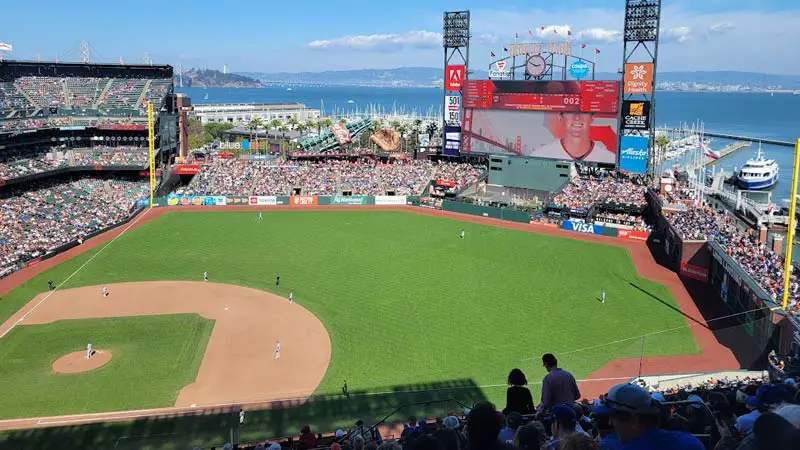
Oracle Park, home of the San Francisco Giants, has dimensions that particularly favor left-handed hitters, especially in right field.
The right-field wall is relatively close to home plate (309 feet), making it easier for hitters to clear the fence.
Despite its reputation as a pitcher’s park due to its expansive outfield, Oracle Park’s shorter dimensions in certain areas provide ample opportunity for home runs.
In contrast, Fenway Park, where the Boston Red Sox play, also offers favorable conditions for hitters with its close left-field wall, known as the Green Monster.
Standing just 310 feet from home plate, this iconic feature has led to many memorable home runs throughout baseball history.
2. Fenway Park – Boston Red Sox
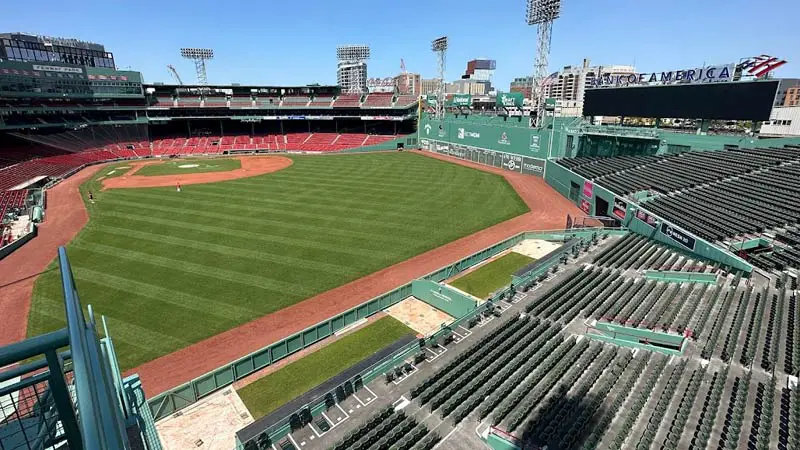
Fenway Park, the historic home of the Boston Red Sox, is famous for its “Green Monster” in left field.
While it’s not the smallest park overall, the short distance to the Green Monster (310 feet to left field foul pole) makes it easier for right-handed batters to hit home runs. The unique dimensions and the wall’s height create a challenging yet favorable environment for hitters.
Other small MLB stadiums where hitting a home run is more attainable include Yankee Stadium with its short porch in right field, and Tropicana Field, known for its cozy dimensions that benefit power hitters in particular.
1. Yankee Stadium – New York Yankees
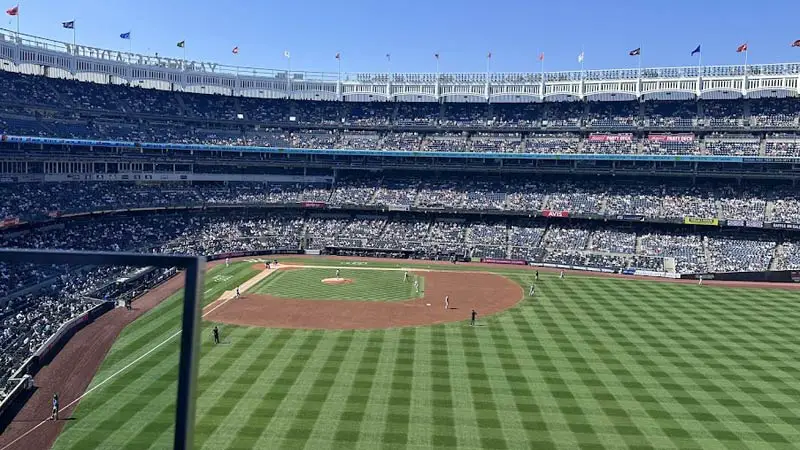
Yankee Stadium tops the list due to its dimensions that heavily favor hitters, particularly in right field. The short porch in right field (314 feet) allows both left-handed and right-handed hitters to capitalize on hitting home runs.
Combined with the stadium’s overall design, Yankee Stadium consistently ranks among the top MLB stadiums for home runs, providing fans with plenty of exciting offensive displays.
Coming in at number two is Fenway Park, known for its quirky dimensions and the iconic Green Monster in left field.
With its short distance to left field (310 feet), Fenway Park is a hitter’s paradise where players can easily send balls over the famous wall, delighting the crowd with thrilling home runs.
Evaluation Criteria for Stadium Size
When evaluating stadium size in Major League Baseball (MLB) for home run potential, key factors like field dimensions and park effect scores are crucial.
These metrics play a significant role in understanding how certain stadiums create an environment conducive to hitting home runs.
Measuring Field Dimensions
Field dimensions play a vital role in determining the likelihood of hitting a home run in MLB stadiums. The distance from home plate to the outfield walls, as well as the height of these walls, directly impact how easily players can clear them with a hit.
Smaller field dimensions often mean a shorter distance to hit a home run, increasing the chance of exciting long balls for fans.
When looking at the smallest MLB stadiums, it’s important to consider how these compact dimensions create a more favorable environment for hitting home runs.
The proximity of the outfield walls to home plate can significantly boost a player’s chances of sending the ball over the fence.
Analyzing Park Effect Scores
Park effect scores serve as a comprehensive measure of how each stadium impacts player performance, including home runs.
Factors like altitude, wind conditions, and field dimensions are taken into account to calculate these scores. Higher park effect scores indicate stadiums that are more favorable for hitting home runs due to various environmental and structural factors.
When looking at the 10 smallest MLB stadiums to hit a home run, park effect scores play a crucial role. They offer valuable insights into how these compact stadiums can still be favorable for home run hitters, despite their smaller size.
Trend Analysis of Home Runs over the Years in Small Stadiums
Analyzing the trend of home runs in small MLB stadiums offers insights into how these compact spaces have played a crucial role in shaping the game.
Despite their smaller dimensions, these stadiums have seen notable changes in the frequency and impact of home runs over the years, reflecting the dynamic nature of baseball dynamics.
Notable Home Runs in Smallest MLB Stadiums
Throughout MLB history, the smallest stadiums have witnessed memorable home runs that have defined games and showcased the power of exceptional hitters
Fenway Park
One of the most iconic moments at Fenway Park was David Ortiz’s walk-off home run in Game 4 of the 2004 ALCS against the Yankees.
His clutch hit over the Green Monster helped propel the Red Sox to their historic comeback against their arch-rivals.
Another legendary Fenway Park home run was Carlton Fisk’s dramatic “pole dance” in Game 6 of the 1975 World Series.
As he waved his arms to keep the ball fair, Fisk’s shot off the left-field foul pole remains one of the most memorable homers in baseball history.
Oracle Park
Barry Bonds left an indelible mark on Oracle Park with his record-breaking 756th career home run in 2007.
The towering shot into the right-center field seats solidified his place in baseball history and stands as a testament to his power and dominance during his career with the San Francisco Giants.
Another memorable moment came in the 2014 NLCS when Travis Ishikawa hit a walk-off home run in Game 5, sending the Giants to the World Series with a shot into the right-field seats, electrifying the home crowd.
Yankee Stadium
Derek Jeter’s 3000th career hit in 2011 was a milestone achieved in spectacular fashion with a home run into the left-field seats, marking a historic moment in Yankee Stadium’s storied history.
Another iconic Yankee Stadium home run occurred during the 1977 World Series when Reggie Jackson blasted three home runs in Game 6, each one landing in the short porch of right field, earning him the nickname “Mr. October” for his clutch performance.
T-Mobile Park
Ken Griffey Jr., a beloved figure in Seattle Mariners history, marked his 300th career home run in 1999 with a memorable shot into the right-center field seats at what was then Safeco Field, now T-Mobile Park.
This milestone home run highlighted Griffey’s prolific career and his impact on the Mariners franchise.
In more recent history, Nelson Cruz showcased his power with a 482-foot home run, one of the longest in T-Mobile Park history, showcasing the stadium’s dimensions and the Mariners’ ability to produce memorable home runs.
Guaranteed Rate Field
Paul Konerko’s grand slam in Game 2 of the 2005 World Series against the Astros at Guaranteed Rate Field remains a defining moment for the Chicago White Sox and their fans.
Konerko’s powerful hit helped the White Sox on their way to their first World Series championship in 88 years.
Jim Thome also left his mark on Guaranteed Rate Field with his 500th career home run in 2007, a milestone achieved with a powerful shot to left-center field, solidifying his place among baseball’s elite sluggers.
Minute Maid Park
Minute Maid Park witnessed one of the longest games in postseason history during the 2005 NLDS, culminating in Chris Burke’s walk-off home run in the 18th inning of Game 4 against the Braves.
Burke’s dramatic hit into the left-field seats clinched the series for the Houston Astros and remains one of the most memorable moments in Minute Maid Park history.
In 2017, George Springer added to Minute Maid Park’s lore with a home run in Game 7 of the World Series, helping the Astros capture their first championship in franchise history.
Great American Ball Park
Adam Dunn’s mammoth 535-foot home run in 2004 stands as one of the longest ever hit at Great American Ball Park.
Dunn’s prodigious power was on full display as he launched the ball deep into the Cincinnati night, showcasing the hitter-friendly dimensions of the ballpark.
In a more recent highlight, Jay Bruce delivered a walk-off home run in the 2010 NL Central tiebreaker game against the Cardinals, a shot that sent Reds fans into a frenzy and solidified Bruce’s place in Reds history.
Citizens Bank Park
Ryan Howard’s 58th home run of the 2006 season broke Mike Schmidt’s longstanding Phillies record for most home runs in a single season.
Howard’s powerful swing and ability to hit to all fields were showcased at Citizens Bank Park, a venue known for its short porch in right field that favors left-handed power hitters.
Another memorable moment at Citizens Bank Park occurred during the 2009 World Series when Chase Utley hit five home runs, including two in Game 5, showcasing the ballpark’s dimensions and his ability to deliver in clutch moments.
Coors Field
Coors Field’s high altitude and spacious dimensions have produced numerous memorable home runs throughout its history.
One of the most iconic moments came during the 2007 NL Wild Card tiebreaker game when Matt Holliday slid home with the winning run on a sacrifice fly, capping a dramatic comeback for the Colorado Rockies.
Trevor Story also left his mark on Coors Field with a 505-foot home run in 2018, the longest in stadium history, highlighting the ballpark’s unique conditions that favor power hitters.
Chase Field
Luis Gonzalez’s walk-off blooper single in Game 7 of the 2001 World Series against the Yankees at Chase Field remains one of the most dramatic moments in Diamondbacks history.
Gonzalez’s timely hit into shallow center field secured the first World Series championship for the franchise.
Paul Goldschmidt also showcased his power at Chase Field with a three-home run game in 2017, demonstrating his ability to take advantage of the ballpark’s hitter-friendly dimensions and produce memorable moments for Diamondbacks fans.
Implications of Stadium Size
The size and dimensions of baseball stadiums have significant implications for the game, players, and overall fan experience.
Here are some key implications of stadium size in Major League Baseball:
Effect on Game Strategy and Player Performance
Smaller MLB stadiums with compact dimensions often lead to shifts in game strategy and player performance. Hitters may focus more on contact hitting and situational hitting rather than solely relying on power to hit home runs.
This adjustment in approach can create a more dynamic and strategic gameplay where teams might prioritize advancing baserunners through hits and sacrifices rather than waiting for the long ball.
Additionally, pitchers may adopt different pitching strategies in smaller venues, emphasizing location, movement, and pitch selection to counter the hitters’ advantage in these parks.
The unique characteristics of small stadiums challenge players to adapt their skills and tactics to the specific dimensions, influencing the overall game dynamics.
Stadium Size Impact on Fan Experience
The size of a stadium significantly affects the fan experience during MLB games. In smaller venues, fans are closer to the action, providing a more intimate and engaging atmosphere.
The proximity to the field allows spectators to feel more connected to the game, players, and overall excitement.
Additionally, in compact stadiums, fans have better sightlines and perspectives on the game, enhancing their viewing experience.
The smaller size creates a sense of energy and vibrancy, amplifying the crowd’s impact on players and the overall game ambiance.
Overall, the size of an MLB stadium plays a crucial role in shaping the fan experience, making each game more immersive and memorable for attendees.
Frequently Asked Questions
How does stadium size impact home run potential in MLB?
Stadium size influences home run potential in MLB by affecting field dimensions and park effect scores.
What strategic shifts can occur for hitters and pitchers in compact MLB stadiums?
In compact MLB stadiums, hitters may adjust their approach to take advantage of shorter distances to outfield walls, focusing on power hitting.
How does stadium size enhance fan engagement in MLB games?
Smaller MLB stadiums create a more intimate and engaging atmosphere for spectators, bringing them closer to the action on the field.
What role does stadium size play in shaping gameplay dynamics in MLB?
Stadium size plays a crucial role in shaping gameplay dynamics in MLB by influencing strategies used by both teams.
Conclusion
Understanding the impact of stadium size on home run potential is essential in Major League Baseball. The top 10 smallest MLB stadiums provide unique opportunities for players to showcase their hitting skills.
Factors like field dimensions and park effect scores greatly influence the game strategy and overall player performance.
Additionally, the intimate atmosphere created by compact stadiums enhances the fan experience, fostering a deeper connection to the game.
In conclusion, the size of an MLB stadium is not just about dimensions; it’s about shaping the dynamics of gameplay and creating lasting memories for both players and spectators alike.
By analyzing the dimensions and park effect scores of the top 10 smallest MLB stadiums, players can strategize for optimal performance and maximize their hitting potential.
The intimate atmosphere in compact stadiums also enriches the fan experience, strengthening their connection to the game and leaving a lasting impact on all involved.

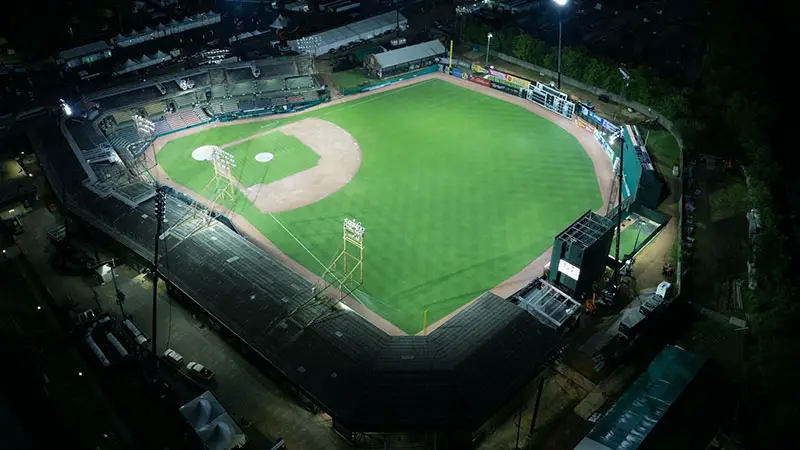



Pat Bloom